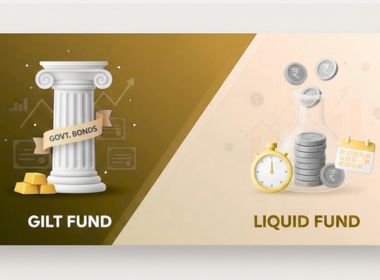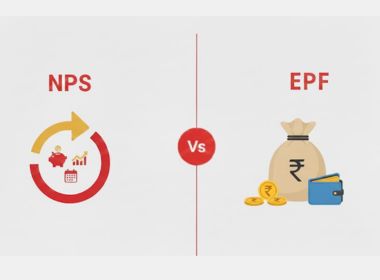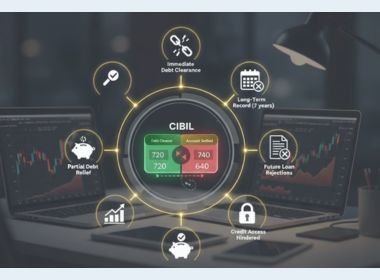Search Suggestions
- Gold Loan
- Money Transfer
- Mutual Funds

Difference Between Primary Security and Collateral Security in Business Loan
Securing a business loan typically requires offering assets as assurance to the lender that the loan will be repaid. These assets are classified as either primary security or collateral security, with each playing a distinct role in the lending process. For businesses, recognising the difference between the two is crucial when planning financing strategies.
Table of Content
- What Is Security?
- What Is Primary Security?
- Key Characteristics of Primary Security:
- What is Collateral Security?
- Key Characteristics of Collateral Security
- Examples of Primary Security and Collateral Security
- Why Collateral Security Is Required?
When applying for a business loan, lenders often specify the type of security they need. Borrowers usually encounter the terms "primary security" and "collateral security," but may not fully understand the differences between them. Having clarity on these concepts not only helps in choosing the right financing option but also ensures smoother negotiations with lenders.
Here’s everything you need to know about the difference between primary and collateral security, their core features, and why understanding them is essential as a borrower.
What Is Security?
In financial terms, security refers to an asset that a borrower pledges to a lender as assurance for loan repayment. This arrangement reduces the lender’s risk by giving them the right to claim or sell the pledged asset if the borrower fails to meet repayment obligations. The nature of the security often influences the loan amount, interest rate, and overall borrowing terms.
Broadly, securities in lending are classified into two types:
- Primary Security: The core asset created or acquired using the loan itself.
- Collateral Security: Additional asset(s) offered alongside the primary security to give the lender extra confidence in repayment.
What Is Primary Security?
Primary security refers to the asset that is directly financed through the loan. It is linked to the very purpose for which the loan is taken and serves as the lender’s first safeguard if the borrower defaults on repayment.
For example, if you borrow INR 8 lakhs to purchase office equipment, that equipment itself becomes the primary security for the loan.
Key Characteristics of Primary Security:
- Loan-Linked: It is directly connected to the loan’s purpose and acquired with the borrowed funds.
- First Line of Protection: In case of non-repayment, the lender will first attempt recovery from this asset.
- Pre-Defined in Agreement: The details of the primary security are clearly outlined in the loan contract.
- Risk Mitigation: Since it holds tangible value, it reduces the lender’s exposure to financial risk.
What is Collateral Security?
Collateral security refers to any additional asset pledged by the borrower to strengthen the loan agreement, apart from the primary security. Unlike primary security, it is not directly related to the loan’s purpose but serves as a secondary safeguard for the lender.
For instance, if a business takes a loan of INR 20 lakhs to purchase machinery (the machinery being the primary security) and also pledges a personal flat, that flat becomes the collateral security.
Key Characteristics of Collateral Security
- Additional Assurance: Provides lenders with an extra layer of protection.
- Secondary Recovery Source: Comes into effect if the primary security does not cover the outstanding dues.
- Wide Asset Options: Can include real estate, gold, shares, fixed deposits, or vehicles.
- Improves Loan Eligibility: Enhances the borrower’s chances of securing higher loan amounts at better terms.
Examples of Primary Security and Collateral Security
Example of Primary Security
Imagine you apply for a business loan of ₹40 lakh to purchase new manufacturing machinery for your factory. The lender will typically require the financed machinery itself to be pledged as security. In this case, the equipment purchased through the loan serves as the primary security.
Example of Collateral Security
Now, consider a situation where you apply for a ₹1 crore loan to expand your business by acquiring a new office building. The building being purchased becomes the primary security. However, to provide the lender with additional assurance, you also pledge your existing warehouse property, which you already own. Here, the warehouse acts as the collateral security, while the new office building remains the primary security.
Suggested Read: What is a Collateral Loan? Definition, Types & How It Works
Why Collateral Security Is Required?
Collateral security plays a vital role in lending by providing lenders with an added layer of protection against the risk of default. While asset-backed loans, such as housing loans or factory loans, are generally secured by the property or machinery being financed, certain loan types, like cash credit or working capital loans, may not have a tangible asset directly tied to them. In such cases, lenders often require collateral security in the form of immovable property or other valuable assets.
This additional pledge gives lenders greater confidence that, even if the borrower fails to repay, they have a reliable backup source for recovery. It ensures loan security, minimises potential losses, and makes it easier for borrowers to access larger loan amounts.
Understanding the distinction between primary security and collateral security helps businesses plan their borrowing more effectively. While primary security forms the first line of repayment assurance, collateral security acts as a safety net, strengthening the borrower’s credibility and enabling smoother loan approvals. Along with maintaining a healthy CIBIL score, careful documentation and strategic asset utilisation can help businesses effectively leverage both forms of security for enhanced financial management.
CATEGORIES
OUR SERVICES
-

Gold Loan
-

Personal Loan
-

Cibil Score
-

Vehicle Loan
-

Small Business Loan
-

Money Transfer
-

Insurance
-

Mutual Funds
-

SME Loan
-

Corporate Loan
-

NCD
-

PAN Card
-

NPS
-

Custom Offers
-

Digital & Cashless
-

Milligram Rewards
-

Bank Mapping
-

Housing Finance
-

#Big Business Loan
-

#Gold Loan Mela
-

#Kholiye Khushiyon Ki Tijori
-

#Gold Loan At Home
-

#Sunherisoch
RECENT POSTS

Gilt Fund vs Liquid Fund: Full Form, Meaning & SIP Guide
Know More
XIRR in Mutual Funds & SIP: Full Form, Meaning, Formula and How to Calculate
Know More
7 Key Factors to Consider Before Taking an SME Loan
Know More
Difference Between Black Gold and Gold: Everything You Need to Know
Know More
NPS vs EPF: Everything You Need to Know About Retirement Savings
Know More
What is a Credit History? Impact on Credit Score and Credit Report
Know More
Loan Closure Vs. Loan Settlement: Meaning, Benefits, and CIBIL Score Impact
Know More
Is Silver the New Gold? A Look at 2025 Price Trends
Know More
What Are the Various Types of Equity Funds and How They Work?
Know More
Why Are Gold Loans Becoming the Most Preferred Financial Option in 2025?
Know MoreFIN SHORTS

What Are Co-Pay and Deductibles in Insurance Policies?
Know More
Should You Take a Loan Against Your Mutual Fund or SIP?
Know More
Top 5 Best Mid-Cap Mutual Funds to Watch in 2026
Know More
Are Personal Loans Right for Retirees? Key Points to Consider
Know More
What Happens to a Personal Loan After the Borrower Dies?
Know More
Best Loan Choices for Credit Scores of 580 and Below
Know More
7 Reasons Why a Gold Loan Is the Best Option for Small Businesses
Know More
10 Reasons Why People in India Prefer Physical Gold
Know More
Real Estate vs Gold: Which Is a Better Investment in India?
Know More
10 Common Mistakes That Make Investors Lose Money in Mutual Funds
Know More
10 Reasons Why Gold Has So Much Appeal in Uncertain Times
Know More
7 Ways Settling Debt Can Impact Your CIBIL Score
Know More- South +91 99469 01212
- North 1800 313 1212





